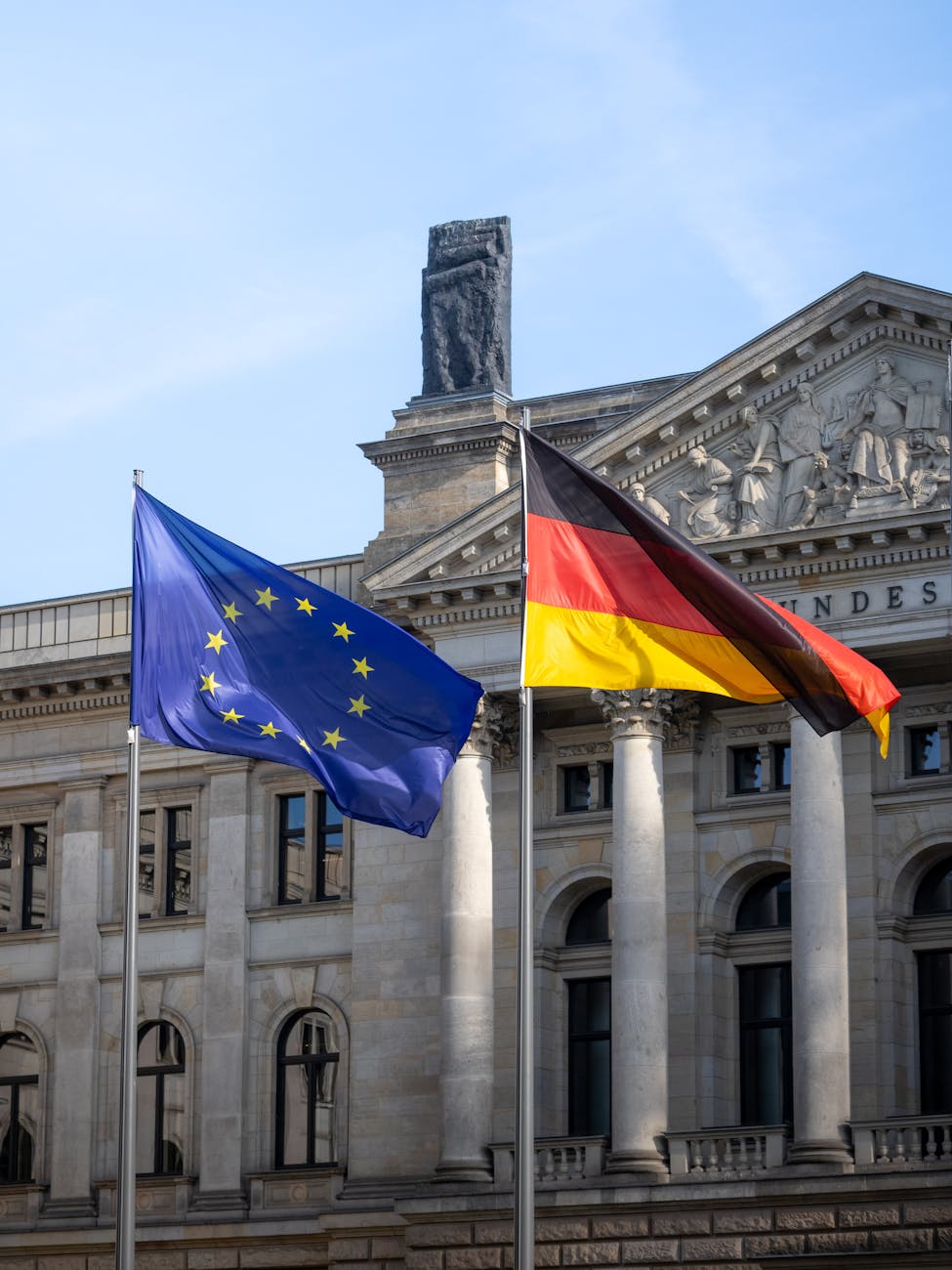25 Years of Orbit: How the International Space Station Forged a New Era of Discovery and Paved the Way for Humanity’s Cosmic Ambitions
The orbiting laboratory’s silver anniversary marks a quarter-century of groundbreaking research, economic innovation, and the foundational steps for lunar and Martian exploration.
This November, the International Space Station (ISS) will quietly, yet profoundly, reach a monumental milestone: 25 years of continuous human habitation. For a quarter of a century, a rotating crew of astronauts and cosmonauts from across the globe has lived and worked aboard this orbiting marvel, transforming low Earth orbit into a hub of scientific inquiry, technological development, and international cooperation. More than just a feat of engineering and a testament to human ingenuity, the ISS has served as a crucial stepping stone, a vital proving ground for the technologies and operational experience necessary for humanity’s next great leaps – missions to the Moon and ultimately, to Mars. As we stand on the precipice of this silver jubilee, it’s an opportune moment to reflect on the ISS’s rich history, its multifaceted contributions, and its enduring legacy in shaping the future of space exploration and our understanding of the universe and ourselves.
From Vision to Reality: The Genesis of a Global Laboratory
The concept of a permanently inhabited space station had long been a dream for spacefaring nations. Following the collaborative Apollo-Soyuz Test Project in 1975, which demonstrated the potential for cooperation between the United States and the Soviet Union, seeds of a larger, more ambitious partnership began to sprout. The Reagan administration’s 1984 State of the Union address formally proposed the construction of a permanently crewed space station, initially named Space Station Freedom. This ambitious undertaking was envisioned as a collaborative project that would involve international partners, fostering scientific exchange and sharing the immense costs associated with such an endeavor.
However, the geopolitical landscape shifted dramatically in the late 1980s and early 1990s with the dissolution of the Soviet Union. This monumental change presented both challenges and opportunities. Russia, with its extensive experience in long-duration spaceflight from its Salyut and Mir programs, became a critical potential partner. Recognizing the mutual benefits and the potential to streamline development, NASA, along with its established partners Canada, Japan, and the European Space Agency, invited Russia to join the project. This pivotal decision transformed the vision of Space Station Freedom into the International Space Station, a truly global endeavor that brought together the expertise and resources of multiple nations.
The construction of the ISS was an unprecedented logistical and engineering challenge, unfolding over more than a decade. It involved over 100 spacewalks and the assembly of more than 100 individual components in orbit. The first module, Russia’s Zarya control module, was launched on November 20, 1998. This was quickly followed by the U.S.-built Unity node, which was attached to Zarya in early December 1998. The assembly process continued through a series of Space Shuttle missions and Russian rocket launches, with the first permanent resident crew, Expedition 1, arriving on November 2, 2000. This date marks the beginning of the continuous human presence that we celebrate today.
The ISS was not merely a collection of modules bolted together; it was a sophisticated laboratory designed to withstand the harsh environment of space while providing a stable platform for cutting-edge research. Its design incorporated advanced life support systems, power generation capabilities, and communication technologies, all managed by a complex international partnership. The initial vision was ambitious, and the execution was even more so, requiring unprecedented levels of coordination and collaboration among different space agencies, their engineers, and their astronauts.
The journey from conception to continuous habitation was fraught with challenges, including budget constraints, design changes, and the tragic loss of the Space Shuttle Columbia in 2003, which temporarily halted assembly. Despite these setbacks, the dedication of the international partners and the resilient spirit of human endeavor ensured that the ISS project not only persevered but ultimately thrived, becoming a beacon of international cooperation in an often-divided world. Its ongoing operation has provided invaluable data and experience, far exceeding its initial design parameters and contributing to a broader understanding of how to live and work effectively in space.
A Crucible of Discovery: Research Pushing the Boundaries of Science
The primary purpose of the ISS has always been to serve as a unique microgravity laboratory, enabling scientific research that is impossible to conduct on Earth. For 25 years, it has hosted a staggering array of experiments across virtually every scientific discipline, yielding breakthroughs that impact our daily lives and advance our understanding of fundamental physics, biology, and chemistry. The absence of Earth’s gravitational pull allows scientists to observe phenomena in ways that reveal their intrinsic properties, free from the masking effects of gravity. This has led to advancements in fields ranging from materials science and fluid physics to human physiology and fundamental physics.
One of the most significant areas of research on the ISS has been in human health and physiology. Studying how the human body adapts to microgravity provides crucial insights into aging, osteoporosis, muscle atrophy, and cardiovascular health. Astronauts experience physiological changes similar to those experienced by elderly individuals on Earth, making the ISS a unique living laboratory for gerontology and rehabilitation science. For instance, research into bone loss in space has directly informed strategies for preventing and treating osteoporosis on Earth. Similarly, studies on muscle deconditioning have contributed to the development of new exercise regimes and rehabilitation protocols for patients recovering from illness or injury.
Beyond human health, the ISS has been instrumental in materials science. The controlled environment of microgravity allows for the creation of new alloys, crystals, and polymers with unique properties that are unattainable under terrestrial conditions. These advancements have the potential to lead to stronger, lighter materials for aerospace, improved catalysts for industrial processes, and novel drug delivery systems. Experiments involving crystal growth, for example, have produced more perfect crystals than those grown on Earth, which can lead to more efficient semiconductors and improved pharmaceutical formulations.
The ISS has also been a platform for exploring fundamental physics. Experiments investigating fluid dynamics, combustion, and heat transfer in microgravity have deepened our understanding of these complex processes, with implications for everything from weather modeling to the design of more efficient engines. Research into protein crystallization in space has been particularly fruitful, leading to more accurate determination of protein structures, which is essential for developing new drugs and therapies to combat diseases like cancer and Alzheimer’s.
Furthermore, the ISS has served as a crucial testbed for technologies essential for future deep-space missions. Advanced life support systems, water recycling technologies, and closed-loop environmental controls developed and refined aboard the station are directly applicable to long-duration missions to the Moon and Mars, where resupply from Earth is impossible. The operational experience gained from maintaining and operating a complex, international outpost in space has been invaluable in building the expertise needed to manage future endeavors further from home.
The collaborative nature of the ISS has also fostered a rich environment for interdisciplinary research. Scientists from different countries and different fields work together, sharing data and insights, leading to novel approaches and unexpected discoveries. This international collaboration is not just about sharing resources; it’s about pooling intellectual capital to tackle some of the most complex scientific questions facing humanity. The ISS truly embodies the spirit of scientific exploration as a global endeavor, transcending national boundaries in the pursuit of knowledge. The ongoing research continues to push the boundaries of what we know and what we can achieve, with each experiment contributing to a growing repository of knowledge about life, matter, and the universe itself.
Forging a Low Earth Orbit Economy and Preparing for the Future
The ISS is not just a scientific laboratory; it is also a catalyst for the burgeoning low Earth orbit economy and a critical enabler of NASA’s ambitious exploration goals. The station’s sustained presence has paved the way for commercial ventures in space, demonstrating the viability of private sector involvement in space operations and creating new opportunities for innovation and economic growth.
NASA has actively pursued partnerships with commercial companies to provide cargo and crew transportation to the ISS. Companies like SpaceX and Northrop Grumman have developed and successfully operated vehicles to resupply the station, reducing costs and increasing access to space. This commercialization strategy not only supports the ISS but also builds the infrastructure and experience necessary for future private space ventures, including space tourism and the development of commercial space stations.
The experience gained from operating the ISS has been directly transferable to planning and executing NASA’s Artemis program, which aims to return humans to the Moon and establish a sustainable lunar presence. The technologies, operational procedures, and international partnerships forged during the ISS era are foundational to the success of these future missions. For example, the life support systems being developed for Orion, the spacecraft that will carry astronauts to the Moon, are direct descendants of the systems perfected on the ISS. Similarly, the understanding of how to manage long-duration missions in a challenging space environment, including the psychological and physiological effects on crews, is invaluable for planning Mars expeditions.
The ISS has also served as a vital platform for testing technologies intended for Mars. These include advanced propulsion systems, radiation shielding, and robust communication systems. The challenges of maintaining human health and well-being over extended periods in the isolation of space are being studied on the ISS, providing crucial data for mitigating the risks associated with multi-year journeys to the Red Planet. The station’s ability to simulate some of the conditions of deep space, albeit with the benefit of relatively quick return capabilities, makes it an indispensable testing ground.
Moreover, the ISS has been a key partner in Earth observation and climate science. Instruments aboard the station monitor our planet’s atmosphere, oceans, and landmasses, providing critical data for understanding climate change, natural disasters, and environmental degradation. This Earth science mission underscores the station’s value not only for outward-looking exploration but also for understanding and protecting our home planet.
The continued operation of the ISS, even as its operational lifespan is extended, plays a crucial role in maintaining a continuous human presence in orbit, fostering international collaboration, and nurturing the nascent space economy. It represents a tangible investment in humanity’s future in space, providing the experience and infrastructure necessary to venture further and explore more boldly than ever before. The lessons learned and the technologies developed on the ISS are not just about reaching the Moon or Mars; they are about building a sustainable future for human activity beyond Earth.
A Balanced Perspective: The Benefits and Challenges of a Global Outpost
The International Space Station, like any large-scale, complex endeavor, presents a multifaceted picture with both significant advantages and inherent challenges.
Pros:
- Unprecedented Scientific Advancement: The ISS has provided a unique microgravity environment for a vast range of scientific experiments, leading to breakthroughs in medicine, materials science, and fundamental physics that benefit life on Earth and advance our understanding of the universe.
- International Cooperation and Diplomacy: It stands as a remarkable example of peaceful international collaboration, bringing together nations to work towards common goals, fostering diplomatic ties, and promoting shared scientific and technological advancement.
- Technological Innovation and Spin-offs: Technologies developed for the ISS, such as advanced water purification systems, remote medical diagnostic tools, and improved materials, have found numerous applications in everyday life, improving quality of life and creating new industries.
- Foundation for Future Exploration: The ISS serves as a critical testbed for the technologies, operational procedures, and human factors research necessary for long-duration missions to the Moon, Mars, and beyond.
- Inspiration and Education: The visible presence of humans living and working in orbit has captivated the public imagination, inspiring new generations of scientists, engineers, and explorers.
- Low Earth Orbit Economy Enabler: The station’s continued operation has spurred the growth of commercial space activities, including cargo and crew transportation, paving the way for future private space endeavors.
Cons:
- High Cost of Operation: Maintaining and operating the ISS is extremely expensive, requiring significant financial investment from participating nations year after year.
- Complex Maintenance and Upgrades: The station requires continuous maintenance, repairs, and upgrades, which are often challenging and risky, involving numerous spacewalks.
- Aging Infrastructure: As the ISS ages, the potential for system failures and the need for more extensive repairs increase, raising concerns about its long-term sustainability.
- Political and Funding Uncertainties: The long-term commitment of all partner nations to funding and supporting the ISS can be subject to changing political priorities and economic conditions.
- Risk to Human Life: Despite rigorous safety protocols, spaceflight inherently carries risks to the lives of the astronauts and cosmonauts aboard.
- Limited Scientific Throughput Compared to Ground-Based Labs: While unique, the scientific output of the ISS is also limited by the number of crew members available and the time they can dedicate to research, as well as the logistical challenges of conducting experiments in space.
Key Takeaways: A Legacy in Orbit
- The International Space Station (ISS) marks 25 years of continuous human presence in orbit this November.
- It was assembled through an unprecedented international collaboration involving NASA, Roscosmos, ESA, JAXA, and CSA.
- The ISS serves as a unique microgravity laboratory, enabling groundbreaking research in fields like human physiology, materials science, and fundamental physics.
- Research conducted on the ISS has led to significant advancements in understanding human adaptation to space and has yielded practical applications for life on Earth.
- The station is a crucial testbed for technologies and operational experience needed for future deep-space missions, including the Artemis program to the Moon and eventual missions to Mars.
- The ISS has fostered the growth of a commercial low Earth orbit economy, with private companies now providing essential services like cargo and crew transport.
- While incredibly beneficial, the ISS also presents significant challenges, including high operational costs and the complexities of maintaining aging infrastructure.
- The collaborative spirit of the ISS serves as a powerful model for international cooperation in scientific and technological pursuits.
- The station’s ongoing research contributes to our understanding of Earth’s climate and environment.
- The ISS represents a vital investment in humanity’s long-term future in space, building the foundation for sustained human presence beyond Earth.
The Future of Orbit: Transitioning and Expanding
As the ISS approaches its fourth decade of operation, discussions are well underway regarding its eventual retirement and the transition to new orbital platforms. NASA and its partners are actively supporting the development of commercial space stations, which are expected to take over many of the research and commercial activities currently conducted aboard the ISS. This transition aims to ensure continuity in low Earth orbit research and economic activity while freeing up NASA resources to focus on deeper space exploration, such as the Artemis missions to the Moon and preparatory work for Mars.
The plan is to gradually decommission the ISS in the early 2030s, after a significant period of continued operation and handover of critical functions to commercial entities. This phased approach allows for the orderly transfer of knowledge, technology, and infrastructure, minimizing any disruption to scientific research and commercial operations. The development of these new commercial stations is seen as a natural evolution of the space economy, building upon the legacy and lessons learned from the ISS.
Looking beyond low Earth orbit, the ISS has undeniably laid the groundwork for the ambitious exploration goals of the 21st century. The experience gained in long-duration spaceflight, the development of closed-loop life support systems, and the understanding of human physiology in microgravity are all directly applicable to missions to the Moon and Mars. The technologies tested on the ISS are robust enough to withstand the rigors of interplanetary travel and operations on other celestial bodies. Furthermore, the international partnerships forged around the ISS serve as a model for future global collaborations in space exploration, pooling resources and expertise to achieve common objectives.
The insights gained from ISS research continue to expand our knowledge of the universe and our place within it. From studying the origins of life to understanding the fundamental forces of nature, the station remains a vital scientific outpost. As we move forward, the lessons learned from the ISS will continue to guide our journey into the cosmos, ensuring that humanity’s expansion into space is both informed and sustainable. The legacy of the ISS is not one of an endpoint, but rather a launching pad for a new era of human exploration and scientific discovery.
Join the Celebration and Support the Future of Space Exploration
The silver jubilee of the International Space Station is more than just an anniversary; it’s a powerful reminder of what humanity can achieve when we work together. As we celebrate 25 years of continuous presence in orbit and the countless scientific and technological advancements it has enabled, it’s important to look towards the future. The ISS has been a foundational pillar for our ongoing journey into space, and its legacy will continue to inspire and inform our pursuit of lunar bases, Martian colonies, and beyond.
We encourage you to learn more about the incredible work being done on the ISS and the exciting plans for the future of space exploration. Follow NASA and its international partners on social media and their official websites for the latest updates and discoveries. Consider supporting organizations dedicated to space education and advocacy, helping to inspire the next generation of explorers and innovators. The journey beyond Earth is a collective endeavor, and your interest and support play a crucial role in shaping our future among the stars.









